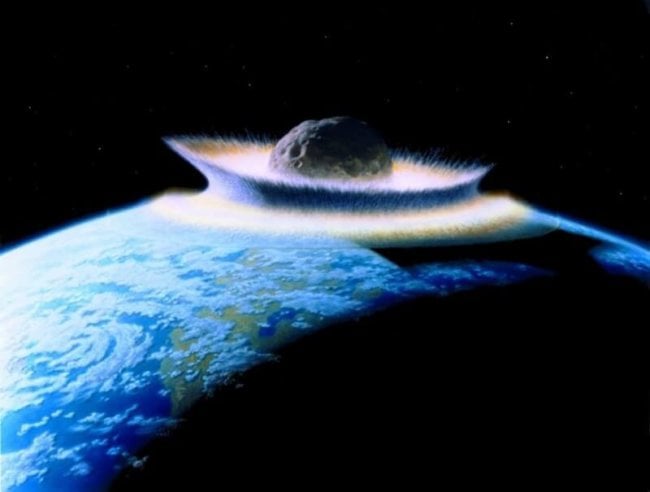
65 million years ago a massive asteroid, five to ten kilometers in diameter, struck the Earth at speeds greater than 30,000 kilometers per hour. As a result of this disastrous collision was destroyed by giant creatures, known as dinosaurs that ruled the Earth for over 100 million years. Remarkably, about 30% of all species now existing on Earth at that time was destroyed. That time was not the first, when the Earth gets a catastrophic object, and certainly not the last. It is believed that such events happen periodically due to the motion of the Sun around the galaxy. If so, we should be able to predict when is coming the next event and if we should worry for own destiny.
The threat of mass extinction is always there, but calculating it accurately is not always possible. Threats in our Solar system — in outer space bombing — as a rule, come from two sources: the asteroid belt between Mars and Jupiter and the Kuiper belt and the Oort cloud beyond the orbit of Neptune. For the asteroid belt, which is suspected (but not exactly) in the destruction of the dinosaurs, our chances to face a large object decrease over time. Because the material between Mars and Jupiter gradually depleted and there is nothing that could fill. We understand that when you look at two things: the young Solar system, early models of our Solar system, and most airless worlds without active Geology: Moon, mercury, most moons of Jupiter and Saturn.
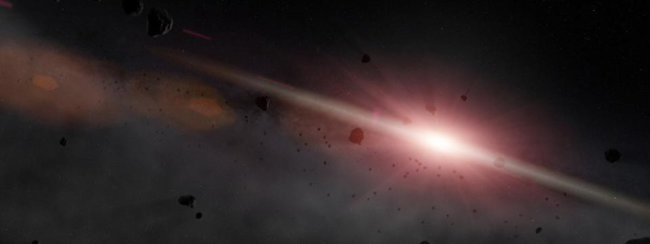
History of falls in our Solar system are literally written on the faces of worlds like the moon. Lunar highlands — light spot — show us the history of the heavy bombardment era of the young Solar system more than 4 billion years ago. There are many large craters with smaller craters inside that shows extremely high level of activity in those days. However, if you look at the dark areas (the lunar seas), you will see not so many craters inside. Radiometric Dating shows that most of these zones from 3 to 3.5 billion years. The youngest region, which are the largest sea of the moon is Oceanus Procellarum, an age of 1.2 billion years old and relatively new.
Based on these data we can conclude that the asteroid belt a bit over time and the rate of formation of craters fall. It is believed that we are far from it, but in the next few billion years the Earth will get the last major asteroid strike, and if it will still be life, mass extinction is inevitable. Today the asteroid belt is less of a threat than in the past.
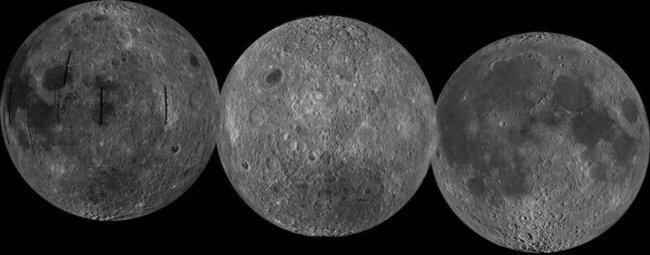
But the Oort cloud and the Kuiper belt — a totally different story.
Beyond Neptune in the outer Solar system, lies a deep threat. Hundreds of thousands — if not millions — large boulders of ice and stone float on sparse orbits around the Sun, in anticipation of the perturbations caused by the passage of large masses. Violation of the orbit can lead to different outcomes, among them the sending of the object into the inner Solar system, where he will be a brilliant comet, and maybe something will encounter.
Interactions with Neptune or other objects in the Kuiper belt and the Oort cloud is random and does not depend on the processes of our galaxy, but there is a possibility that the passage through rich star region — like galactic disk or one of the spiral arms — can increase the chances of cometary rain and comet impact on Earth. As the Sun moves through the milky Way, every 31 million years it passes through the galactic plane. This is a purely orbital mechanics, the Sun and all the stars are moving on elliptical road around the center of the galaxy. But some people argued that the periodic extinctions have occurred exactly with the same frequency. That is, these extinctions could be caused by cometary rain, which happens once in 31 million years.
Is it possible? The answer can be found in the data. We can consider the major events of extinction on Earth as a mark in the fossil record. We can count the number of deliveries (it is just above the “type” in our classification of living beings; the kind of man is homo in homo sapiens) that existed at a certain time. We can make it back to 500 million years back in time, thanks to the discoveries made in sedimentary rocks.
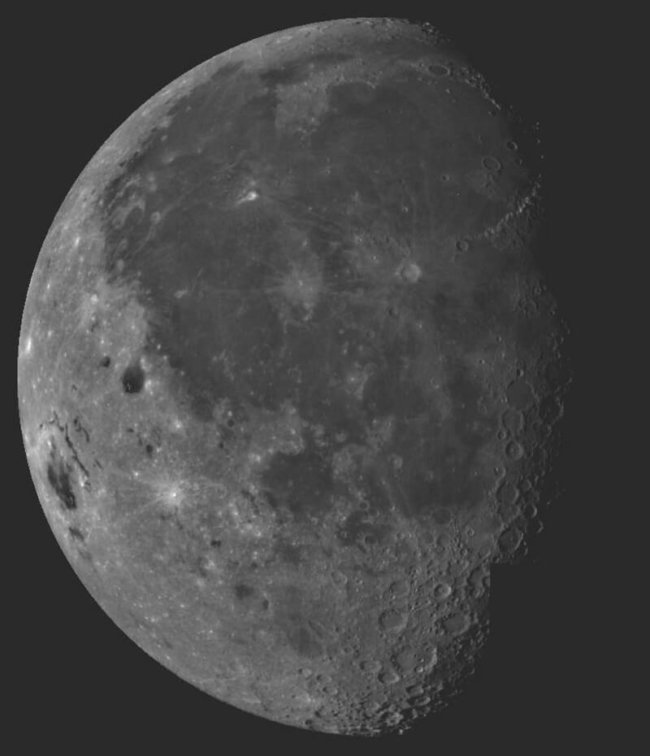
We can look for patterns in these events of extinction. The easiest way to do this quantitatively, the Fourier transform with subsequent search patterns. If we see the events of mass extinctions every 100 million years, for example, with a large disappearance of the number of species after a certain period of time, the Fourier transform will show a big splash with a frequency of 1/(100 million years). What the data show the extinctions?
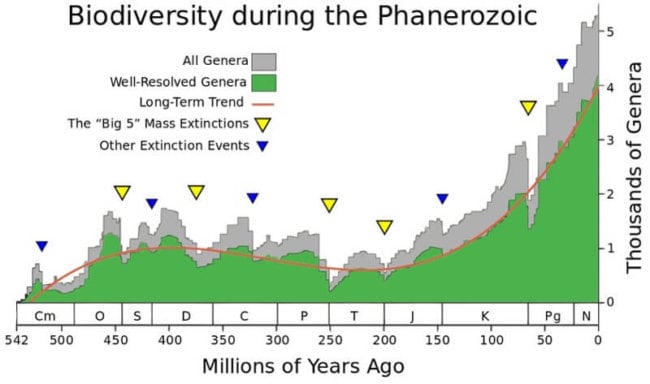
The measurement of biodiversity, as well as changes in the number of births in a particular time, identifying most of the major extinction events over the last 500 million years.
There is some relatively weak evidence for a frequency of 140 million years and a few harder — to time jumps to 62 million years. Where the orange arrow you see a frequency in 31 million years. These two seem like a huge jump, but only in relation to other jumps that are unimportant. How strong, objectively, these two jump showing the frequency?
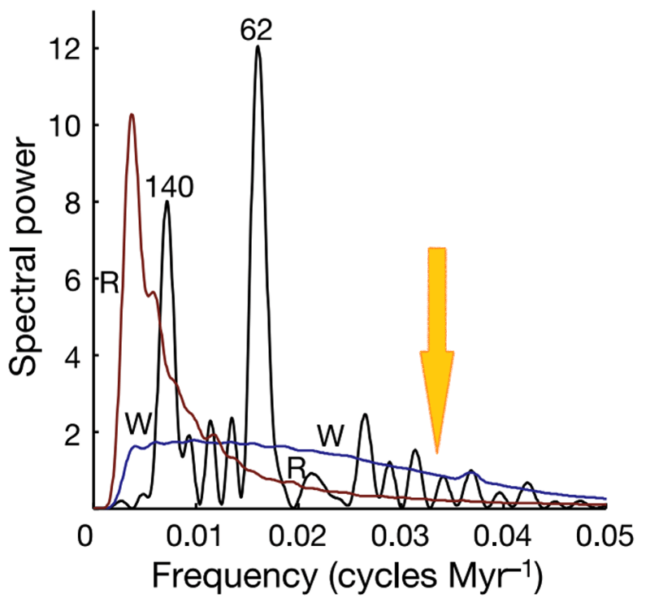
This figure shows the Fourier transform for the events of extinction over the past 500 million years. The orange arrow shows where to fit the frequency in 31 million years.
For only 500 million years old you can place three possible mass extinctions with a period of 140 million years and eight with a period of 62 million years. What we see does not fit in these times with such events; rather, if such an event happened in the past, there is an increased chance that this will happen through the 62 or 140 million years. However, frequency 26 to 30 million as it is not observed.
If we begin to explore the craters on Earth and the geological composition of sedimentary rocks, this idea fails completely. All of the craters that formed on Earth due to falls, less than a quarter is formed by objects from the Oort cloud. Moreover, the boundaries between geological periods (Triassic/Jurassic, Jurassic/Cretaceous, Cretaceous/Paleogene) and the geological records that correspond to the events of extinction, show that only the extinction of 65 million years ago has a layer of dust and ash that we would associate with a big impact.
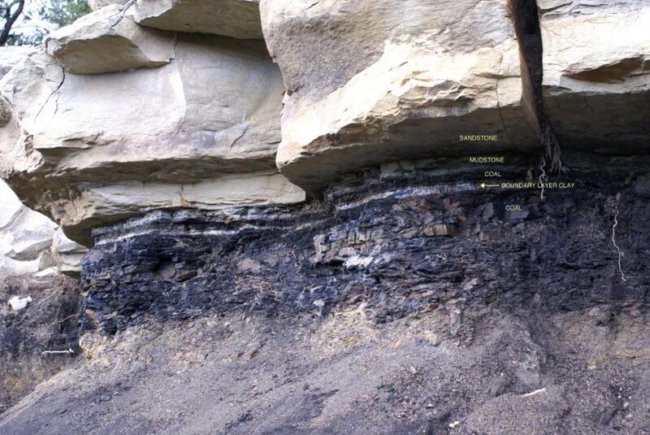
The boundary layer of the Cretaceous and Paleogene periods characteristic is present in sedimentary rock, but presented a thin layer of ash, and its composition tells us about the extraterrestrial origin of the body, which led to mass extinction.
The idea that mass extinctions happen on a periodic basis with interesting and compelling, but it simply does not exist convincing evidence. The idea that the passage of the Sun through the galactic plane leads to periodic extinctions, is also interesting but unproven. We know that in every half million years to reach the Oort cloud are stars, but currently we are far from these events. In the foreseeable future Earth threatened by a natural disaster, caused by the Universe. On the contrary, the biggest threat to us introducing ourselves.
When we are waiting for a mass extinction?
Ilya Hel